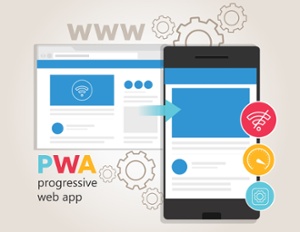 The long global nightmare is coming to a merciful end. Adobe announced last year that it will end development work and support for its long-lived Flash platform in 2020.
The long global nightmare is coming to a merciful end. Adobe announced last year that it will end development work and support for its long-lived Flash platform in 2020.
Although the world may not celebrate with balloons, streamers and ticker-tape parades (we’re actually hopeful the world will respond with “Flash? What’s that?”), in the web- and mobile-app development community, we expect to raise a quiet toast or two. Flash has been a thorn in our collective side for a long time.
Why People Hate Flash
Adobe Flash started out as a nifty platform for developing and delivering multimedia content, including animations, video and interactive games. Although it was better suited for use in standalone PC applications, it quickly became the de facto standard for delivering animated content, mostly video, on the internet. YouTube’s adoption of the technology helped solidify Flash’s position as the go-to platform for video delivery.
But despite its prevalence, Flash suffered from a number of shortcomings:
- Flash has always been Adobe’s proprietary technology, and thus web browsers could not natively implement it; it required the end user to load a plug-in on each browser in order to view Flash content.
- Over the years, the Flash executable became bloated—dozens of megabytes that end users had to download and install every time there was an update, which was pretty frequently. Keeping it up to date—often to plug security vulnerabilities—became a source of annoyance for end users.
- Flash content can also become quite large, making sites that rely on Flash all but useless on slower internet connections.
- Another source of frustration for end users was the plug-in’s habit of crashing, which was bad news for Flash-heavy websites.
- And if that weren’t enough, Flash content was not well supported, when it was supported at all, on mobile devices. The relentless adoption of mobile as users’ primary content devices pretty much spelled the end of Flash.
It got to the point where Apple’s Steve Jobs famously wrote an essay pointing out Flash’s flaws, and led Google’s Chrome and other browsers to require end users to explicitly enable the Flash plug-in for each visit to each site that had Flash content.
To their credit, Adobe has acknowledged for some time that Flash was past its prime and needed to be retired, and now has done just that.
So Now What?
What will replace Flash? Part of the reason for the longevity of Flash has been that there never has been a single technology that outperformed it.
First, the bad news: There still isn’t.
Now, the good news: It’s possible to bundle existing technologies to deliver multimedia content, addressing all of the reasons people disliked Flash.
The major piece of the puzzle is HTML5. As an open standard, it has been incorporated into all major web browsers and can deliver audio and video content without bloated, vulnerable, crash-prone plug-ins. How well this capability performs depends on the browser, and some browsers have done it better than others. However, as browsers have matured, they have steadily improved the delivery experience and are now more or less indistinguishable in this regard.
For the vast majority of content that previously would have been developed on the Flash platform, HTML5 is all that’s needed. Almost all of the rest can be handled by some combination of two other open and commonly used technologies: JavaScript and CSS3. JavaScript can provide the interactivity needed for games, tutorials, and other interactive content. And CSS can provide the styling.
But what happens to all the existing content out there that can be rendered only on the Flash player? For existing Flash content, the eventual, final version of the Flash plug-in will still work after 2020, and Adobe will work with browser makers to ensure security vulnerabilities are patched. In addition, Adobe is, admirably, providing software to convert Flash objects to HTML5 friendly content. Content owners who really care will take advantage of these tools, and those who don’t will let their content fade into obsolescence.
So here’s to you, Flash. Despite your flaws, you did more than anyone else to bring video to the internet. You’ve had a good run, and now it’s time to bow out, and Adobe is helping you do so gracefully. Cheers!
















